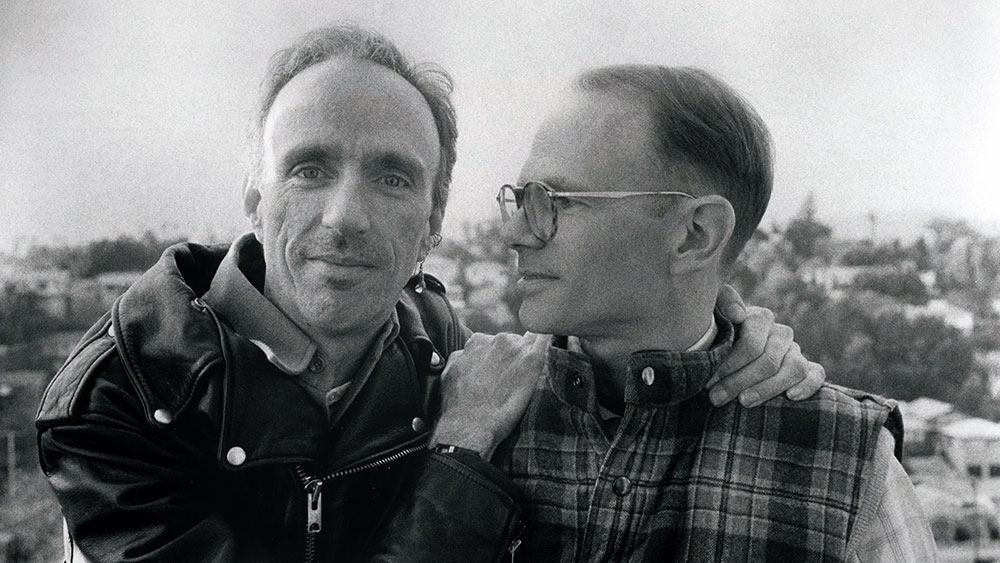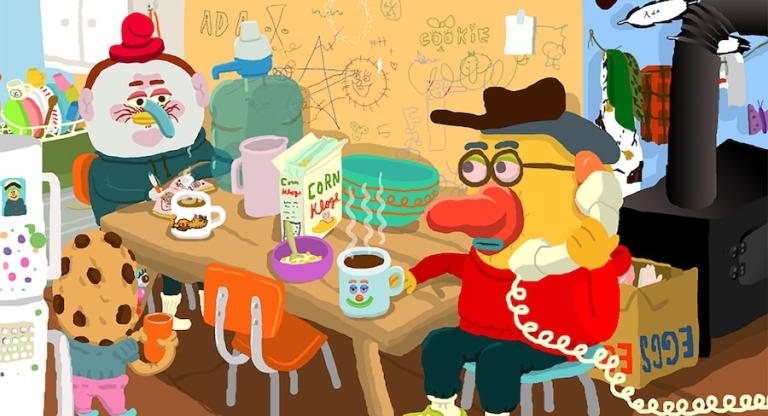I lept at the chance to write about the Museum of the Moving Image’s excellent survey of first-person documentaries from the 1990s titled “Personal Belongings,” programmed by Jeff Reichert and Asha Phelps, by immediately zeroing in on a program that puts into conversation Tom Joslin and Peter Friedman’s Silverlake Life: The View from Here (1993) with the Pixelvision work of the inimitable queer autofictionist Sadie Benning. I foolishly forgot that Silverlake Life is a film with an effect that is nearly impossible to justifiably describe. It’s a diary of the unstoppable advance of AIDS upon the body of the young filmmaker Tom Joslin, as witnessed by his lover, Mark Massi, who would also die of AIDS-related illness a year later. It must be seen and will not be forgotten, and it punches a crater in the gut of the viewer with its unflinching gaze upon abject helplessness. In Alexandra Juhasz’s 1995 book AIDS TV: Identity, Community, and Alternative Video—a crucial overview of video activism practices during the height of ACT UP—Juhasz uses Silverlake Life in opposition to a contemporaneous episode of the PBS series NOVA, in which HIV is rendered in computer-generated imagery, quantified for the lay viewer even as the talking heads of scientists profess not to understand the virus. This false, postmodern visioning, Juhasz writes, only obfuscates the truth about the disease: it’s “the map preceding the territory,” whereas Silverlake Life (also originally broadcast on PBS in June of 1993) is an unadorned image of the territory itself.
Silverlake Life is somewhat of a sequel to Joslin’s film Blackstar: Autobiography of a Close Friend (1976), another essayistic multimedia documentary about Joslin and Massi’s relationship, their coming out, and their family’s reaction. Footage from that film is repurposed in this one to show the expanse of the two lovers’ relationship. Both films still seem groundbreaking in their willingness to explore the wilderness of auto-ethnography; venturing into a hyper-personal great unknown with nothing but a camera, mirroring burgeoning trends in gay literature such as Hervé Guibert’s autobiographical 1990 novel, To the Friend Who Did Not Save My Life, which changed public perceptions on HIV/AIDS in France. Silverlake Life remains a seminal document in its relentless quest (completed by Peter Friendman, Joslin’s student, after his on-screen death) to make both AIDS and the people living with it visible, and thus make them real.
Benning, like Joslin, is also a bedroom cartographer. While their father, James Benning, traced the landscapes of America with his camera, Sadie charted the interior of their captive young life in suburban Milwaukee on cassette tapes, filmed with the extremely lo-res Fisher-Price Pixelvision camera that was gifted to them by the elder Benning when they were fifteen. Benning’s tapes—the program includes two from 1990, If Every Girl Had A Diary and Jollies—are dispatches from a teenage void brimming with gay horniness and frustration. In Jollies, made when the filmmaker was seventeen, dolls spilled across the bedroom floor retell Benning’s queer awakenings. In If Every Girl Had A Diary, Benning holds the toy camera directly up to their eyes—their use of close-ups and lighting via flashlight is a commonality with SIlverlake Life—as they deliver a droll, poetic sermon on the prison of a gay adolescence. “Last week I almost laughed…” they intone, chomping noisily on a snack, the viewer chained in intimate proximity. It’s funny how many profiles on the burgeoning art star at the time breathlessly lead with Benning’s young age, reminding me of a lyric from a similarly diaristic contemporary young artist, the musician Frankie Cosmos: “and have you heard I am so young?” The press position of Benning as a kid savant in the age of riot grrrl is especially ironic given that the title If Every Girl Had A Diary is so clearly a rallying cry—decades before social media cannibalized and commodified the representational impulse—for Benning’s brethren of young gay weirdos to similarly pick up cameras and find liberation.
Silverlake Life: The View from Here + 2 by Sadie Benning takes place this afternoon, September 21, at the Museum of the Moving Image as part of the series “Personal Belongings: First-Person Documentary in the 1990s.”



